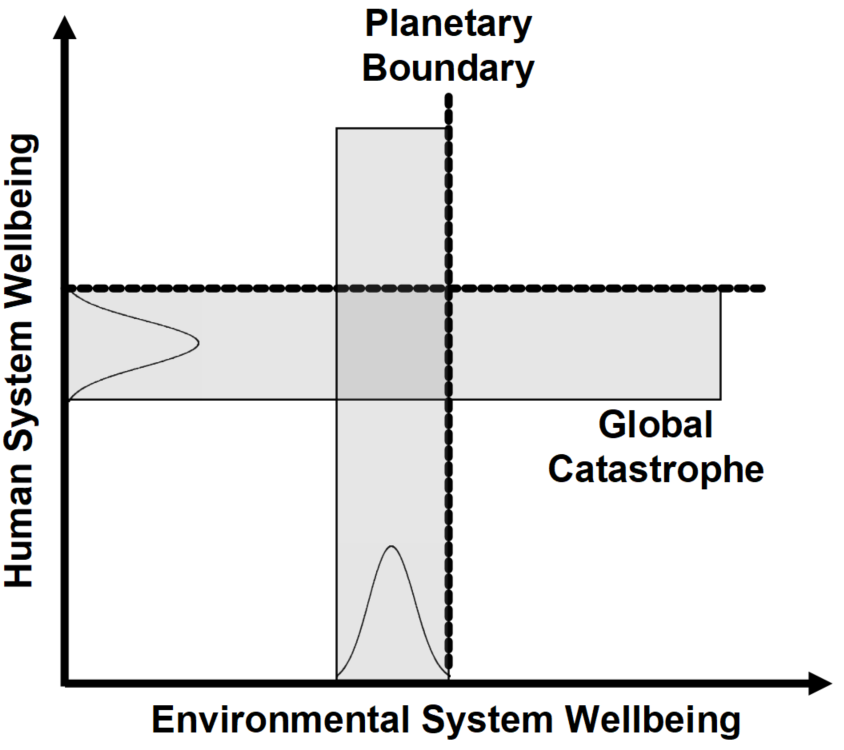
View the paper “Integrating the Planetary Boundaries and Global Catastrophic Risk Paradigms”
Planetary boundaries (PBs) and global catastrophic risk (GCR) are two paradigms that have emerged in recent years to study major global threats to humanity and nature. PBs focuses on threats that can push the global Earth system into fundamentally different states, with unacceptable consequences for humanity. GCR focuses on threats that can cause the permanent collapse of global human civilization or even human extinction, including environmental threats and other threats. PBs and GCR come from different intellectual traditions and have different conceptual bases. This paper integrates PBs and GCR into a new framework, which we call Boundary Risk for Humanity and Nature (BRIHN). The paper illustrates BRIHN using the example of the phosphorus biogeochemical cycle, which can cause great harm to nature but might not be a catastrophe for humanity, illustrating the importance of looking at both.
Treatment of uncertainty: probabilistic thresholds. Global-scale human-environmental systems are highly complex, and thus cannot be understood in full detail. Because of this, both PBs and GCR make great effort to handle the uncertainty in the threats they study.
Treatment of impacts: human and environmental system boundaries. PBs and GCR are both vague about the impacts of the threats they study. PBs holds that crossing thresholds would be unacceptable to humanity, but the thresholds themselves are about nature, not about humanity. GCR focuses on catastrophes causing large declines in total human wellbeing, but is vague about how large the declines would be. BRIHN integrates these two treatments of impacts by setting boundaries for both human and environmental systems. The environmental system boundary is the same as a PB; crossing it risks a catastrophe for nature. The human system boundary is a new concept; crossing it risks a catastrophe for humanity. This catastrophe for humanity offers a new, more precise definition of global catastrophe.
Storytelling with BRIHN. BRIHN can further be used to tell a simplified version of the story of humanity and nature co-evolving from the distant past into the future, for phosphorus and for other threats. The story shows human wellbeing and environmental wellbeing changing over time, going above and below their respective boundaries. As boundaries are crossed, conditions can change dramatically. An important research question is whether crossing the environmental system boundary (resulting in a catastrophe to nature) will lead to the human system boundary also being crossed (resulting in a catastrophe to humanity). How this question is answered could determine how important it is for humanity to protect the environment from crossing planetary boundaries.
Academic citation:
Baum, Seth D. and Itsuki C. Handoh, 2014. Integrating the planetary boundaries and global catastrophic risk paradigms. Ecological Economics, vol. 107 (November), pages 13-21, DOI 10.1016/j.ecolecon.2014.07.024.
This blog post was published on 28 July 2020 as part of a website overhaul and backdated to reflect the time of the publication of the work referenced here.







